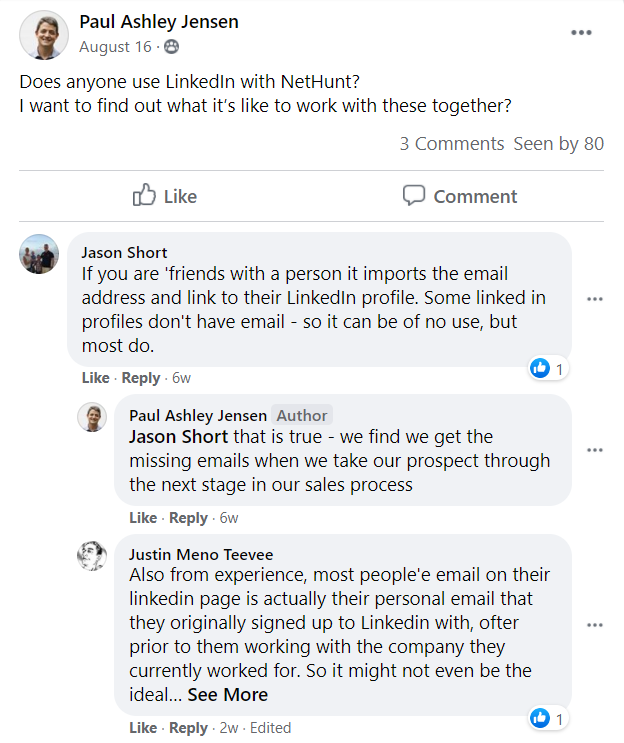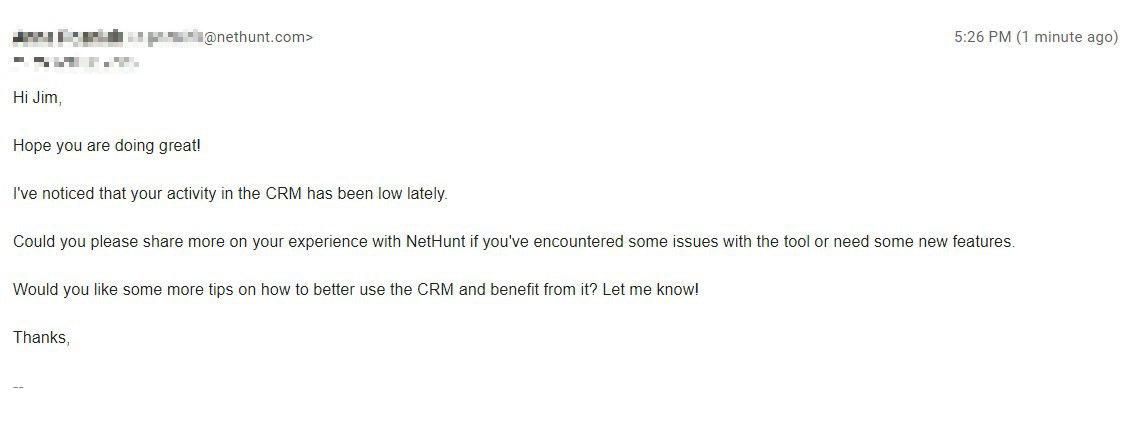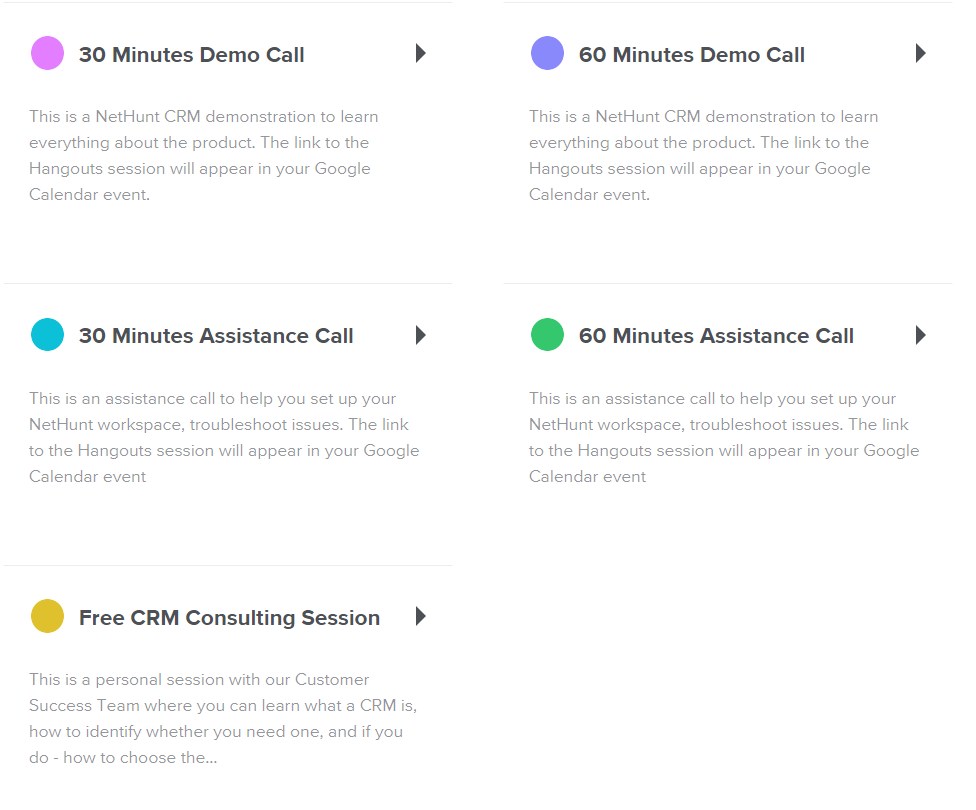Customer-Centricity is bang on trend; 73% of business leaders recognised customer experience as one of the most important purchase-driving factors.
The truth is, there are no conniving, cheeky tricks you can use. Instead, it takes consistency, persistence, and a shared team ethos. Here are the top customer experience strategies our company employs, that we know our customers love us for.
Why did We Decide to Move to Customer Success?
As a bootstrapped company with no side investments, we were very selective about where we spent our money at first. Besides the nature of our business means we emphasise the necessity of quality customer relations. Eventually, we came to the decision that we needed our team to become advocates and voices for our customers. We needed a mediator between customers and the product team, and so it made sense to switch from Customer Support to a Customer Success model.
Customer Support is centred on providing a one-time solution to a problem. Sure, it can help when a customer faces a challenge and reaches out for a solution. The problem is that this model is limited by the issue that your customer is trying to overcome at any specific moment. With Customer Support, you only ever interact with your customers when they’re angry or upset.
Customer Success should be in the DNA of your business and Customer Success team
On the other hand, Customer Success builds long-term relationships with customers, and instead of simply reacting to their problems, you make sure there are none in the first place. Customer Success is sustainable. As a subscription-based SaaS company, we can only be successful if our customers are too. We started to develop our Customer Success department in the end of 2017 and now it comprises four customer success managers. Anastasia leads the department; you might have read a few good words about Anastasia in our user reviews.
If you’re an enterprise-sized business that can afford to have separate technical support and customer success departments, awesome. But if you’re an early-stage startup that counts every penny, we strongly recommend to switch to a Customer Success model, from your existing Customer Support one. But simply renaming your support department is not enough. To effectuate your new Customer Success Department for the potential results, your business needs a high-touch customer relation mindset with passionate employees at the helm.
How We Implement Our Customer Success Strategy
Our Customer Success model helps us achieve a beautifully-low churn rate of just 4.3%. On average, SaaS companies achieve an NPS score of 30; we come in at 26. Alas, we’re not bragging; we want to help. Here are the Customer Success strategies we have implemented that have helped us achieve these numbers.
Onboard and activate customers based on their needs
We put together a buyer persona, which is a depiction of our ideal customer. After registration, this helps us to identify the conversion probability of a customer and the value they can bring to our business. For prospects and clients with bigger teams, those who might need more help from our end to start using the product, we have a dedicated activation program.
First, the customer success team develops a thorough understanding of the client’s business and their workflows. Afterwards, they bend our product to fit the customer’s specific needs and processes. Before the first interaction with a potential customer, a Customer Success Manager needs to answer four questions about a prospect. Answers to these questions help define the use case more clearly, shape the first conversation, and hint at the features we need to show first.
- Which industry are they in, and what product or service do they provide
- Which problems will our product or service help them to solve?
- Which other tools are currently in their tech stack?
- What processes and workflows are already set up to fit our product in there?
We define an ‘activation’ as when a customer first imports their existing customer data, from a spreadsheet or elsewhere, alongside an invitation for their teammates to join the workspace. Whilst onboarding, the aim of our CS managers is to bring customers closer to their ‘aha!’ moment, and faster. Going further, we want to bring our customers to these milestones quicker.
Assisted onboarding and activation helps shorten customer learning curves, reduces product friction, and helps them understand the value of the product faster.
Educate your customers
Educating customers is at the core of a customer achieving success with your product. After you onboarded clients, the education doesn't stop. This is especially true as your product grows and gains more features.
Apart from newsletter and in-product notifications alongside major updates and releases, we run live webinars to walk-through the features we have added or improved. This opens up a two-way conversation and helps us answer all the questions our customers have. Furthermore, we constantly produce educational content on our blog such as guides, ebooks, cheat sheets, and checklists. Take a wild guess where we get our ideas for new content from.
That’s right, from our Customer Success team. We transform their insights into comprehensive copies. Some other activities that SaaS companies can employ as part of customer educational programs include...
- An FAQ page split into sections based on different product features.
- Audio content to help customers troubleshoot product problems can be difficult to consume, but hosting a business- or industry-related podcast can bring value to your clients.
- Conferences or product workshops.
- A learning management system (LMS) with educational videos and tutorials.
- Academies and certificates for those who want to become partners or resellers.
Another resource we developed to educate our customers is our customer community. A community group adds immeasurable value to your product; networking opportunities offer another reason to stay with your brand. People know that, along with the product, they gain a group of like-minded professionals that share similar pain points that need soothing.
Community groups relieves the load from the Customer Success Department’s shoulders by suggesting the best solutions and workarounds to users, from other users.

Run assessment calls
We understand that the success of our clients’ businesses depends on our product to some extent. Between every one to three months, our Customer Success managers do their homework and review client accounts. They take a look at the customers’ initial inquiries inside our CRM system, along with communication history, to estimate whether their initial business pain point is satisfied. Afterwards, they book an assessment call with the customer to offer advice on deeper, more specific use of our product. Not only will that help them achieve their goals by using it efficiently, but encourages them to go beyond these goals by using features they didn’t know about before.
A common issue for SaaS companies can be that once initial users have set up the system, they don’t change their usage of it... even though the system evolves a lot. For users that have been with us since the first days of our product, our Customer Success representatives have constantly helped them to totally restructure their accounts to be able to use the whole functionality to its full potential.
After six months of successful product experience, our clients are offered the opportunity to share their thoughts and show what they could accomplish using our product. We aim to showcase peer-to-peer stories where our clients show how our product helps them to address challenges they have had and how it’s improved their business. We make sure our stories are industry- related, so that our prospects can walk in the shoes of real product users and hear the first-hand experience.
Another responsibility for our Customer Success representatives is also to pay attention to clients with low account activity. We defined some triggers that may be a sign of an upcoming customer churn, such as if there is no workspace activity for two weeks. If so, they reach out with an email to get to know what went wrong and if they need any help from our end.

Implement a conversational experience
A conversational customer experience is one that offers continuous support and guidance to customers, through means of one-to-one communication with a brand. It implies highly-personalised conversations between a brand and their customers offer help with every stage of the buyer journey: from evaluating the product to product issues and eventual renewals.
It should be agreed that customers might not want to email you with a detailed explanation of every problem they experience. This is time-consuming for both them and your business. It’s a similar story regarding product-related questions that prospects might have as they are surfing your website, trying to identify whether your solution is the best fit. One of the easiest ways around this is to implement a conversational experience by employing live chats and chatbots for your website and inside the product itself.
52% of consumers are more likely to make repeat purchases if the company offers support via live chat.
We did that. We installed an Intercom chat function on our website and inside our product. Now, our customer success managers are online and ready to help. At the moment, it’s not realistic for us to be online 24/7. Still, we cover EST working hours because this is the audience that makes up the majority of our client and website traffic.
The main thing with live chats is the need to act fast. Most prospects expect an answer within one minute, and why wouldn’t they? Our average response time is around two minutes, but we are striving to shorten it to 90 seconds. Yes, the chats also help us hit growth points. During the first online-chat conversation, we try to qualify the lead. If necessary, we can move the conversation away from livechat and jump on a live demo to provide a hands-on product experience.

To relieve the workload from constant chatting and emailing with repetitive questions, we created a self-service base of educational content as well as lots of YouTube videos for certain use cases. Of course, it doesn’t cover every possible question, but it works for 85% of requests.
Conversational experience is not just about omni-channel support, it’s also about integrated apps and a centralised hub where we can store every multi-channel interaction with clients.
NetHunt CRM has recently developed an integration with Intercom. With it, we can instantly create or link records for each incoming chat. As a result, we can maintain an individual conversation history, from multiple channels, with each customer within our dashboard.
Collaborate with other departments
We aggregate all client requests using tags in our CRM, so our product manager can evaluate and prioritize them. We hold weekly meetings with the product team and share client feedback and relay frequently-asked requests. To provide best-in-class customer experience, we always close feedback loops. No customer request is left unanswered, regardless of whether it is satisfied or we are not going to make any changes in the near future. If we don’t plan to implement the requested feature, our customer success team finds a workaround to satisfy the request.
As well as weekly meetings, we also have a dedicated Slack channel to post about product bugs. Here we can communicate issues that affect our clients’ businesses, and which need a prompt respoonse. Even though we have a roadmap that we strictly stick to, we always leave the room for urgent requests from our customers.
Internal cooperation instead of competition
Where most businesses force competition between customer success managers, we don’t. We promote cooperation. We clearly outline what the department is for and what it aims to achieve. As a result, every team member wants to collectively contribute to achieve common goals. In the face of particularly difficult hurdles to overcome, we discuss them as a team. We know each other’s strengths, based on the product and previous experience.
Tips for Communication With Customers
- Ease off the technical jargon. Speak to your customers in a language they understand.
For example… instead of ‘when you import data from spreadsheets, you get columns depicted as record fields’, we simply say, ‘when you import data from spreadsheets, the columns turn into separate profiles in CRM’.
- Define dudes with a bro-mindset or customers who come strictly to solve their problem. This does not mean that you should not be friendly with the second ones. It is to build a demo scenario and the tone of voice.
- Befriend your customers. It’s impossible to be a friend to your customers when you don’t know anything about them. Abandon bureaucracy and talk about what their favourite show is and whether they have a pet; find some common interests. Even if you don’t match, you should start with unrelated business topics. Keeping it casual brings you closer together, helping them trust you more.
Look at your customers as individuals; don’t just treat them like cash cows for your business to milk.
- Don’t be shy; ask a lot of questions. Some customers want to hear a no-nonsense solution to their issue without diving deep into the details. You need to explain to them that even though some questions you ask might seem irrelevant, this is the only way to come up with a truly efficient, sustainable solution.
- Clients can be rude; don’t be rude back. Try and diconnect from your normal emotions and put your professional hat on. It’s nothing personal.
- The work of the Customer Success department does not imply pages of scripts and running calls through predefined scenarios. Representatives need an in-depth knowledge of the product and a similarly deep understanding how to apply certain features to business processes.
Bonus: How We Managed Customer Success Through the Crisis Period
The COVID-19 pandemic has changed the way businesses communicate with their customers to ensure retention. One strategy to this end is to provide a better customer experience. We’ve always strived for this, and recently discovered just how important it is for our business. We realised that businesses would minimise their costs, meaning they might want to stop using our software. So, we added a few Customer Success activities to persuade them to stay with us.
Pandemic or not, a business can reap huge benefits from these activities.
We reach out to a client and ask how things are going, without any transactional questions.
We show flexibility. For businesses that have been heavily affected by the crisis, we offered discounts or split payments. Of course we were very selective with this, so as not to undersell our product.
In return, you can ask clients for something in return...
- A review on dedicated platforms like G2 or Capterra.

- To act as an affiliate and recommend your product to partners and friends. Help them with content if necessary, create a special offer, and increase virality.
- Host a partner webinar if you have an audience overlap. This strengthens partner relationships and decreases the chance of them churning. Furthermore, partner webinars require less preparation as you split the responsibilities.
- Ask clients to share a success story on your social media or blog. Let them explain how much they benefit from your product and love your customer success team!
How to Select Customer Success Agents and Which Personality Traits Are Essential
Customer success can either make or break a business. It’s extremely important to hire people who share your company values and possess the appropriate set of personal traits. Our business is built upon a foundation of customer-centricity, and so we are selective to people who will accompany customers along their journey.
- They need to be empathetic. Customer Success is all about fulfilling your customers’ longing for success and ensuring they achieve their goals. If you want to be proactive, you need to have a genuine desire to help. Get to know the goals your customers are trying to achieve with your product and offer them appropriate solutions.
- They need to be responsible. We look for Customer Success representatives who can take responsibility. We want people who take initiative, and don’t rely on their managers. They should even offer ways on how to improve internal processes and interaction with clients.
- They need to be business-savvy. Customer Success representatives need to understand the client’s business in order to deliver them with high value from your product. We often hold training sessions with industry experts to dive deeper into the specifics of each business.
- They need to be proactive. We look at people with active lives, hobbies, and for those who participate in social projects.
- They need to be team players. As we want our Customer Success team to act as a single organism, we are looking for true team players to join our company.
Looking ahead
If you listen to everything you customers have to say, they’ll listen back. Apart from the obvious revenue benefits a longer customer lifetime brings, it can also be a great addition to your collection of real-use case studies. Furthermore happy customers can be very generous with their recommendations, so prepare to enjoy the power of word-of-mouth that’ll give a boost in customer growth.
Even though we’ve hit some nice numbers, we still want more. We aim to achieve a negative churn rate by improving both our product and Customer Success processes. We will do this with the help of valuable feedback from our customers.
Consistency, persistence, and shared team ethos. We did it; anybody can do it.
Good luck.
Table of Contents
Crack the sales formula with CRM Lab
Twice a month, receive actionable CRM content to your inbox.
![Everybody Wins: How to Implement Customer Success [Case Study]](/blog/content/images/size/w2000/2020/10/rsz_you-x-ventures-x8h8vpcelpk-unsplash.jpg)

